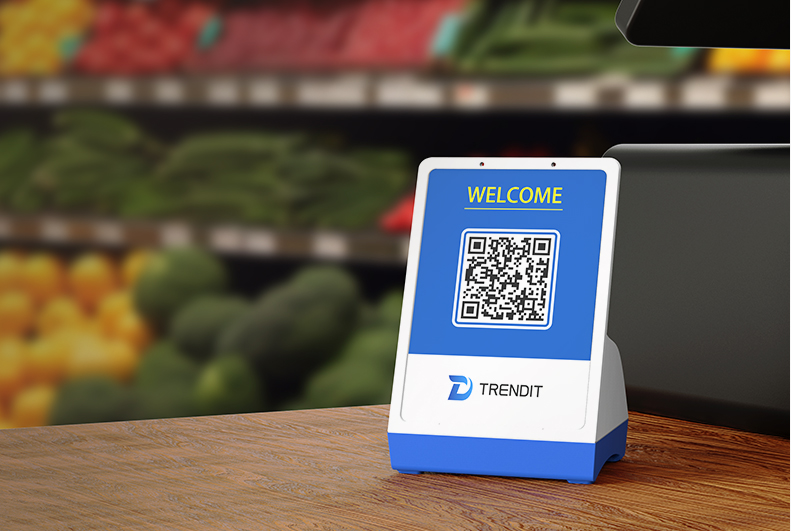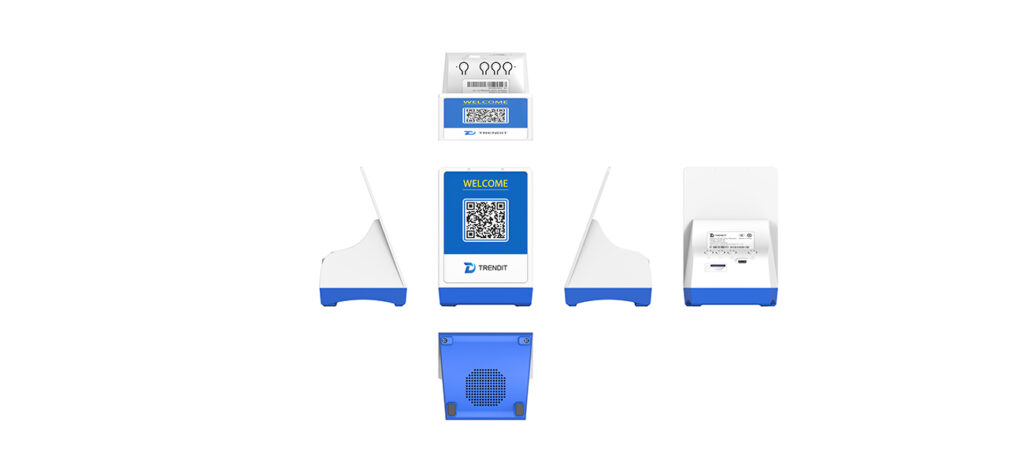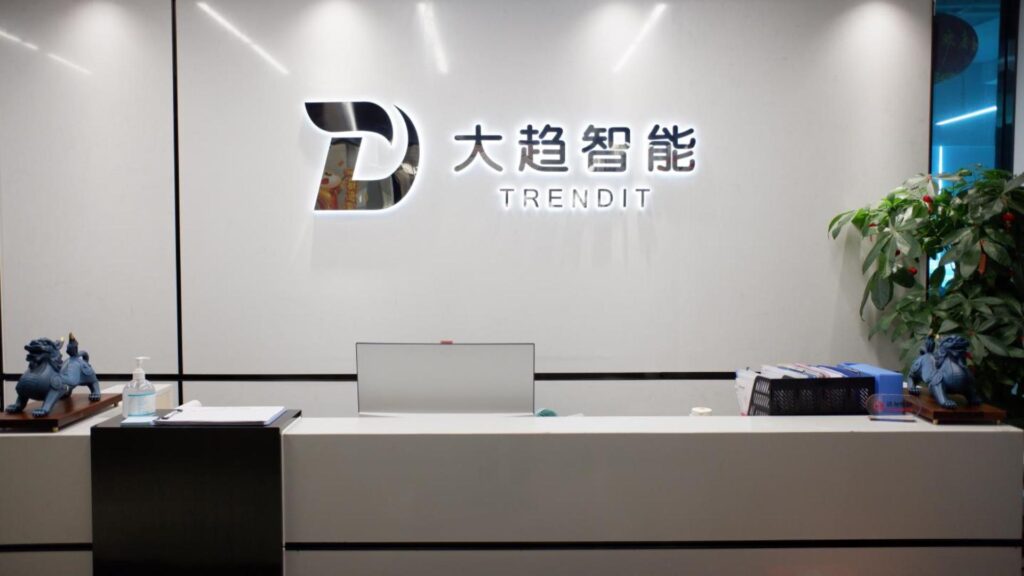Introduction
In today’s digital-first economy, the convenience of mobile payments is reshaping the landscape of financial transactions. At the heart of this transformation lies the static QR code payment box—a simple yet powerful tool that has revolutionized how consumers interact with businesses. These static QR codes provide a fixed, scannable image that directs the user to complete a payment, merging ease of use with swift, secure transactions. In this article, we delve into the mechanics and impact of static QR code payment boxes, exploring how they are becoming a ubiquitous presence at checkout counters and beyond. From small street vendors to large retail chains, these payment boxes facilitate a frictionless payment process, inviting customers to a quick and easy checkout experience. Join us as we decode the enigma of static QR code payment boxes, understanding their role in modern commerce and how they are shaping the future of retail transactions.
Understanding Static QR Codes
Deciphering the Enigma: What are QR Codes?
QR codes, short for Quick Response codes, are two-dimensional barcodes that contain information encoded within a pattern of black squares arranged on a white square grid. Developed in the mid-1990s by Denso Wave, a subsidiary of Toyota, these codes were initially used for tracking automotive parts during manufacturing.
However, their utility has transcended beyond industrial applications to become a ubiquitous tool in various sectors, notably in commerce, marketing, and information dissemination. QR codes offer a quick and efficient way to access digital content or perform actions by scanning the code with a smartphone or QR code reader.

Unveiling the Diversity: Different Types of QR Codes
While QR codes share a common foundation of encoding data within their distinctive patterns, they come in various types tailored to specific purposes and functionalities. Static QR codes, the focus of our discourse, maintain a fixed configuration of encoded information, making them suitable for scenarios where the content remains unchanged over time.
In contrast, dynamic QR codes possess the ability to redirect users to different URLs or update the encoded information dynamically, offering greater flexibility and versatility. Additionally, QR codes can be customized with colors, logos, and design elements to align with branding preferences, enhancing their visual appeal and recognition.
Unlocking the Essence: Characteristics of Static QR Codes
Static QR codes exhibit several defining characteristics that distinguish them from their dynamic counterparts. Primarily, static QR codes encapsulate fixed data, such as a URL, text, or contact information, within the code itself, eliminating the need for server-side processing or database queries to retrieve content.
This inherent stability renders static QR codes ideal for long-term use cases, including product labeling, business cards, and signage. Furthermore, static QR codes typically have a simpler structure and smaller file size compared to dynamic QR codes, facilitating rapid generation and dissemination across various mediums.
Weighing the Scales: Advantages and Disadvantages
Static QR codes offer a multitude of benefits, including ease of creation, universal compatibility, and cost-effectiveness. Businesses can generate static QR codes quickly using free online tools or dedicated software, bypassing the complexities associated with dynamic QR code generation.
Moreover, static QR codes can be scanned by any QR code reader without reliance on specific platforms or technologies, ensuring broad accessibility for consumers. However, the static nature of these codes limits their applicability in dynamic contexts where real-time updates or personalized interactions are required.
Additionally, static QR codes are susceptible to tampering or malicious alteration, necessitating vigilance in ensuring the integrity and security of the encoded content. Despite these drawbacks, static QR codes remain a prevalent and indispensable tool in the arsenal of modern commerce and communication.

Anatomy of a Static QR Code Payment Box
The Inner Workings Unveiled
Static QR code payment boxes may seem like simple devices from the outside, but their internal mechanisms are quite intricate. Understanding their anatomy sheds light on their functionality and reliability.

Physical Components
At first glance, a static QR code payment box appears as a compact device, often resembling a small terminal or scanner. It typically consists of a display screen, a QR code scanner, a processor unit, and connectivity ports. The display screen serves to show transaction details and instructions to users, while the QR code scanner captures payment information encoded in QR codes.
The processor unit processes the scanned data, facilitating communication between the device and external systems. Additionally, connectivity ports allow for power supply and integration with other hardware components, such as receipt printers or cash registers, depending on the intended use.
How It Works Internally
Internally, static QR code payment boxes operate on a sophisticated yet streamlined process. When a user presents a QR code for payment, the scanner captures the code’s information, which typically includes transaction amount and recipient details.
The processor then decrypts and validates this data, verifying its authenticity and integrity. Once validated, the device communicates with the relevant payment networks or platforms to initiate the transaction.
This communication occurs securely over encrypted channels, ensuring the confidentiality of sensitive information throughout the process. Upon successful completion of the transaction, the device provides confirmation to the user and updates its internal records accordingly.
Security Features and Encryption
Security is paramount in the realm of financial transactions, and static QR code payment boxes are no exception. These devices employ various security features and encryption protocols to safeguard both user data and transaction integrity. Encryption algorithms, such as AES (Advanced Encryption Standard) and RSA (Rivest–Shamir–Adleman), are commonly used to protect sensitive information transmitted between the device and external systems.
Additionally, built-in security measures, such as tamper-resistant casings and secure boot processes, help prevent unauthorized access and tampering with the device’s firmware or software. Furthermore, adherence to industry standards and regulations, such as PCI DSS (Payment Card Industry Data Security Standard), ensures compliance with best practices for data protection and security in payment processing environments.
Deployment and Integration
The Installation Process: Seamlessly Embedding Convenience
The deployment of static QR code payment boxes begins with a meticulous installation process, ensuring seamless integration into the existing infrastructure. Typically, these installations involve affixing the QR code-enabled device to a strategic location within a business establishment, often near the point of sale. This positioning maximizes visibility and accessibility for customers, facilitating swift and convenient transactions.
The installation may require considerations such as power sources, network connectivity, and optimal placement for ergonomic usage by both customers and staff. Each step is carefully executed to ensure that the static QR code payment box becomes an intuitive and integral part of the transaction ecosystem.
Integration with Point-of-Sale Systems: Harmonizing Efficiency
One of the hallmarks of static QR code payment boxes is their seamless integration with existing point-of-sale (POS) systems. This integration is paramount for ensuring smooth transactions and accurate record-keeping. Through APIs (Application Programming Interfaces) or dedicated software solutions, static QR code payment boxes communicate effortlessly with POS terminals, enabling real-time transaction processing and synchronization of payment data.
This harmonization streamlines the checkout process, reducing wait times and enhancing overall operational efficiency. Whether in a bustling retail environment or a cozy cafe, the integration between static QR code payment boxes and POS systems is a testament to the synergy between technology and commerce.

Compatibility with Different Payment Methods and Platforms: Universality in Diversity
Static QR code payment boxes epitomize universality by accommodating a diverse array of payment methods and platforms. From traditional credit and debit cards to mobile wallets and digital currencies, these versatile devices cater to the preferences of modern consumers. Through standardized protocols and protocols such as EMVCo and ISO/IEC 18004, static QR code payment boxes ensure compatibility with various payment networks and standards, transcending geographical and technological barriers.
Whether in bustling urban centers or remote rural areas, customers can confidently engage with static QR code payment boxes, knowing that their preferred payment method is supported. This inclusivity fosters financial accessibility and empowers individuals from all walks of life to participate in the digital economy.
Use Cases and Benefits
Retail and Hospitality Industry: Enhancing Transaction Efficiency and Customer Experience
In the bustling world of retail and hospitality, efficiency and customer satisfaction reign supreme. Static QR code payment boxes offer a seamless solution for businesses in these industries.
Picture this: a customer eager to settle their bill swiftly after a delightful dining experience or a satisfying shopping spree. With a static QR code payment box strategically placed at the point of sale, transactions become a breeze.
No more fumbling for cash or waiting for card authorizations. The simplicity and speed of scanning a QR code streamline the checkout process, allowing businesses to serve more customers efficiently.
Additionally, in the era of contactless transactions, static QR codes minimize physical contact, enhancing safety for both patrons and staff. This feature has become particularly crucial in the wake of global health concerns, further solidifying the relevance of static QR code payment boxes in the retail and hospitality sector.
E-commerce Applications: Facilitating Seamless Online Transactions
In the ever-expanding realm of e-commerce, convenience and security are paramount. Static QR code payment boxes extend their utility seamlessly into the digital sphere, offering a user-friendly payment solution for online transactions. Imagine a shopper browsing through an online store, adding items to their cart with ease.
When it’s time to checkout, instead of laboriously entering card details or navigating through multiple payment gateways, they simply scan a static QR code displayed on the website. This instantaneous process not only streamlines the checkout experience but also instills confidence in customers regarding the security of their transactions.
With fraud-prevention measures integrated into static QR code technology, such as encryption and tokenization, e-commerce businesses can ensure a safe and reliable payment ecosystem for their customers, fostering trust and loyalty in the online marketplace. Static QR code payment boxes thus emerge as indispensable tools for e-commerce enterprises seeking to enhance transactional efficiency while safeguarding customer data.
Peer-to-Peer Transactions: Empowering Seamless Financial Interactions
In the realm of peer-to-peer transactions, simplicity, speed, and security are non-negotiable. Static QR code payment boxes offer a versatile solution for individuals looking to exchange funds seamlessly, whether splitting a bill at a restaurant, settling debts among friends, or making charitable donations. Picture a group of friends dining together, each eager to contribute their share of the bill.
Instead of engaging in the cumbersome process of splitting the check or exchanging cash, they can simply scan a static QR code displayed on the receipt, instantly transferring their portion of the payment. This frictionless experience not only eliminates the need for physical currency but also minimizes the risk of errors or discrepancies in calculations.
Moreover, with robust encryption protocols ensuring the security of each transaction, users can trust in the integrity of the payment process, facilitating smooth and worry-free peer-to-peer interactions. Whether it’s a spontaneous gesture of generosity or a practical solution to shared expenses, static QR code payment boxes empower individuals to exchange funds effortlessly, transcending traditional barriers to financial transactions.
Trendit Technology: Premier Manufacturer of QR Code Payment Sound Boxes
Trendit Technology stands out in the global market as a leading manufacturer specializing in QR code payment sound boxes, among other advanced POS solutions. Renowned for their robust transaction technologies, Trendit offers a comprehensive range of products designed to enhance the payment experiences across various industries. Each year, over 2.5 million merchants globally choose Trendit for their reliable POS hardware and software, which include not only static and dynamic QR code payment sound boxes but also Android POS terminals and Linux POS machines.
Trendit’s commitment to excellence is underpinned by significant investments in research and development, with over 10% of annual profits dedicated to advancing their technology. This dedication ensures the continuous enhancement of their products and the introduction of cutting-edge features that meet the evolving needs of the market.
Furthermore, Trendit maintains strong supply chain relationships and upholds rigorous quality standards, ensuring that all products, including their QR code payment sound boxes, meet global certification requirements such as PCI, EMV, VISA, Mastercard, Discover, AMEX, CE, and FCC. The company also offers extensive customization options and collaborative development opportunities for payment service providers, banks, and software vendors, catering to specific industry needs with OEM, ODM, and CKD/SKD services.
By choosing Trendit Technology, clients are assured of accessing cost-effective, high-quality transaction solutions that are both reliable and innovative. With its comprehensive product range, strong R&D focus, and exceptional customer service, Trendit Technology is your trusted partner for advanced QR code payment sound boxes and other POS solutions.

International Use Cases and Considerations: Bridging Global Payment Divides
In an increasingly interconnected world, the need for seamless cross-border transactions has never been more pronounced. Static QR code payment boxes offer a universal payment solution that transcends geographical boundaries, facilitating transactions across diverse currencies and payment platforms. Consider a traveler exploring the vibrant streets of a foreign city, eager to immerse themselves in the local culture and cuisine.
When it comes time to settle their bills, language barriers and currency differences can pose significant challenges. However, with static QR code payment boxes, these obstacles are effortlessly overcome.
By simply scanning a QR code displayed at the point of sale, travelers can initiate transactions using their preferred payment method, whether it’s a credit card, mobile wallet, or digital currency. This seamless experience not only enhances the convenience of international travel but also fosters economic inclusivity by enabling businesses to cater to a diverse clientele.
Furthermore, with the proliferation of static QR code technology on a global scale, businesses can capitalize on the growing trend of cashless transactions, positioning themselves at the forefront of innovation in the dynamic landscape of international commerce. Static QR code payment boxes thus serve as bridges between nations, facilitating cultural exchange and economic growth on a global scale.
Challenges and Solutions
Security Concerns: Safeguarding Transactions in the Digital Realm
Security stands as the cornerstone of any digital payment system, and static QR code payment boxes are no exception. One primary concern revolves around data interception during the transaction process.
Since static QR codes contain fixed information, they can be susceptible to tampering or replication by malicious actors, leading to potential fraud or data breaches. Furthermore, the reliance on third-party payment processors adds another layer of vulnerability.
However, innovative encryption techniques and stringent authentication protocols can mitigate these risks. Implementing end-to-end encryption and regularly updating security measures are crucial steps towards ensuring the integrity and confidentiality of transactions conducted through static QR code payment boxes.
Technical Glitches and Troubleshooting: Navigating the Complexities of Digital Transactions
In the realm of technology, glitches and hiccups are inevitable, and static QR code payment boxes are no stranger to technical challenges. From connectivity issues to software malfunctions, various factors can disrupt the seamless operation of these systems.
For instance, poor network connectivity or outdated software versions may hinder the scanning process, resulting in failed transactions or delays. Moreover, compatibility issues between different devices or platforms can exacerbate the situation.
To address these challenges, businesses must invest in robust technical support infrastructure and provide comprehensive troubleshooting guidelines to both customers and staff. Regular system maintenance and software updates are essential to preemptively identify and resolve potential issues before they escalate.
Regulatory Compliance: Navigating the Regulatory Landscape of Digital Payments
In the ever-evolving landscape of digital payments, regulatory compliance emerges as a critical concern for businesses deploying static QR code payment boxes. Compliance requirements vary across jurisdictions, encompassing data protection regulations, anti-money laundering (AML) laws, and consumer protection measures.
Failure to adhere to these regulations can result in severe penalties and reputational damage. Additionally, the rapid pace of technological innovation often outpaces regulatory frameworks, leading to ambiguity and uncertainty.
To navigate this complex terrain, businesses must stay abreast of regulatory updates and collaborate with legal experts to ensure adherence to compliance standards. Implementing robust Know Your Customer (KYC) procedures and fraud detection mechanisms can further bolster compliance efforts and foster trust among stakeholders in the static QR code payment box ecosystem.
Future Trends and Innovations
The Ever-Evolving Static QR Code Landscape
As technology advances at an unprecedented pace, so does the evolution of static QR codes. From their humble beginnings as mere data storage tools to their current status as indispensable payment solutions, static QR codes have undergone remarkable transformations. Innovations in encoding algorithms, data compression techniques, and error correction mechanisms continue to refine their efficiency and reliability.
Moreover, advancements in printing technologies have enabled the creation of more intricate and visually appealing static QR codes, enhancing their aesthetic appeal while maintaining functionality. As static QR codes evolve, they are poised to play an increasingly pivotal role in shaping the future of digital transactions.
Static QR Codes Meet Cryptocurrency: A Convergence of Technologies
The integration of static QR codes with emerging payment methods, such as cryptocurrency, represents a convergence of technologies with profound implications. Cryptocurrency, with its decentralized nature and blockchain technology, offers unparalleled security and transparency in financial transactions.
By incorporating static QR codes as a means of facilitating cryptocurrency payments, businesses can tap into the benefits of both worlds: the convenience and widespread adoption of QR code payments and the security and efficiency of blockchain-based currencies. This integration not only expands the utility of static QR codes but also accelerates the mainstream adoption of cryptocurrency, paving the way for a more inclusive and efficient financial ecosystem.
Redefining Financial Ecosystems: The Potential Impact of Static QR Codes
The widespread adoption of static QR codes has the potential to reshape financial ecosystems on a global scale. By providing a seamless and standardized payment experience across diverse industries and regions, static QR codes foster greater interoperability and accessibility in financial transactions. Moreover, their low cost of implementation and ease of use make them particularly well-suited for empowering underserved communities and driving financial inclusion initiatives.
As static QR codes continue to proliferate across various sectors, they are not merely transforming payment systems but also catalyzing broader socioeconomic changes. From empowering small businesses to revolutionizing cross-border remittances, the impact of static QR codes reverberates far beyond the realm of digital payments, ushering in a new era of financial innovation and empowerment.

Case Studies and Success Stories
Real-world Examples of Businesses Implementing Static QR Code Payment Boxes
From Local Markets to Global Giants: Adoption Stories
The adoption of static QR code payment boxes spans a wide spectrum, from small local vendors to multinational corporations. In China, for instance, street food vendors and small retail shops have embraced this technology with remarkable enthusiasm, driven by the ubiquity of mobile payment platforms like Alipay and WeChat Pay.
These static QR code payment boxes have simplified transactions, enabling even the smallest businesses to offer a modern, cashless payment option. Similarly, in India, the Unified Payments Interface (UPI) has propelled the widespread use of static QR codes, with merchants ranging from roadside stalls to large retail chains like Reliance Retail integrating these payment boxes to cater to the growing digital-savvy consumer base.
On a larger scale, global giants such as Starbucks and McDonald’s have also adopted static QR code payment boxes in various regions. Starbucks, for example, integrated static QR codes into its mobile app, allowing customers to make quick payments by scanning the code at the counter.
This not only sped up the transaction process but also enhanced the overall customer experience by reducing wait times. McDonald’s implemented similar systems in countries like Japan and China, where mobile payments are predominant, further illustrating the versatility and scalability of static QR code payment solutions.
Key Takeaways and Lessons Learned
Lessons from the Frontlines: Practical Insights
The successful implementation of static QR code payment boxes across diverse business environments offers several key takeaways. First and foremost, the simplicity and low cost of deploying these systems make them an attractive option for businesses of all sizes.
The primary requirement is a printed QR code linked to the merchant’s account, which can be easily displayed at the point of sale. This low barrier to entry has been crucial for small businesses, allowing them to participate in the digital payment ecosystem without significant upfront investment.
Another critical lesson is the importance of customer education and engagement. Businesses that have effectively communicated the benefits and ease of use of static QR code payment boxes have seen higher adoption rates.
For example, vendors in markets where QR code payments are new often provide brief demonstrations or have clear signage explaining the process. This proactive approach helps build consumer confidence and accelerates the transition to digital payments.
Additionally, security and reliability are paramount. Ensuring that the static QR codes are securely linked to the correct merchant accounts and are protected against tampering is essential to maintain trust.
Businesses have found success by working with reputable payment service providers that offer robust security measures and prompt customer support. Flexibility and adaptability have proven to be vital.
As technology evolves, businesses that continuously update their payment systems to incorporate new features, such as dynamic QR codes or integration with loyalty programs, can enhance customer loyalty and stay ahead of the competition. The success stories of static QR code payment boxes underscore the importance of a customer-centric approach, security vigilance, and a willingness to innovate.
Conclusion
As we conclude our exploration of static QR code payment boxes, it’s evident that these tools are not just facilitating transactions; they are reshaping the way businesses and consumers interact in a digital-forward world. The simplicity and security offered by static QR codes have enabled a seamless bridge between physical and digital commerce, making them an indispensable asset for businesses of all sizes. By allowing for quick and secure payments, these QR codes enhance customer satisfaction and streamline operational efficiencies, setting a new standard in the consumer payment experience. Looking ahead, the potential for innovation and integration in static QR code technology is immense, promising even greater advances that could further simplify and secure retail and personal transactions. Embracing this technology not only benefits businesses in terms of operational efficiency but also enhances the overall customer experience, paving the way for a future where digital payments are even more integrated into everyday life.
